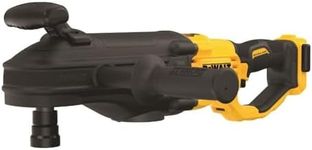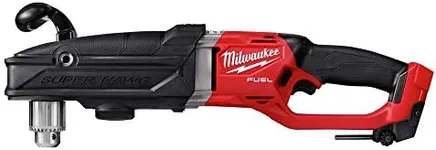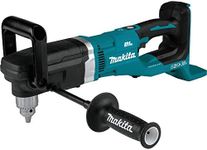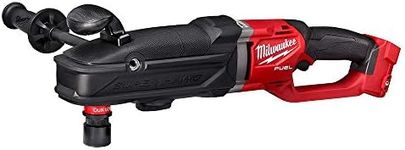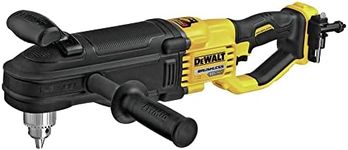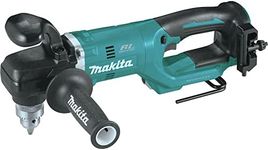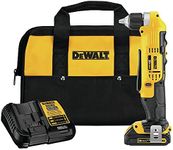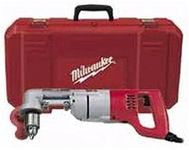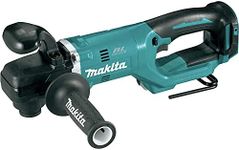Buying Guide for the Best Cordless Right Angle Drills
Choosing the right cordless right angle drill can make your DIY projects or professional tasks much easier and more efficient. These tools are designed to help you work in tight spaces where a standard drill might not fit. To find the best fit for your needs, it's important to understand the key specifications and how they impact the performance and usability of the drill. Here are the main specs to consider and how to choose the right one for you.Battery VoltageBattery voltage determines the power of the drill. Higher voltage means more power, which is useful for heavy-duty tasks. Common voltages range from 12V to 20V. For light tasks like assembling furniture or drilling into softwood, a 12V drill is sufficient. For more demanding tasks like drilling into metal or hardwood, a 18V or 20V drill would be better. Choose based on the intensity of your typical projects.
Battery Capacity (Ah)Battery capacity, measured in ampere-hours (Ah), indicates how long the battery will last on a single charge. Higher Ah means longer runtime. Capacities typically range from 1.5Ah to 5Ah. If you have long projects or don't want to recharge frequently, opt for a higher capacity battery. For occasional use or shorter tasks, a lower capacity battery will suffice.
Chuck SizeThe chuck size determines the maximum diameter of the drill bit that the drill can hold. Common sizes are 3/8 inch and 1/2 inch. A 3/8 inch chuck is suitable for most household tasks and light-duty work. A 1/2 inch chuck is better for heavy-duty tasks and larger drill bits. Choose based on the size of the drill bits you plan to use.
Speed SettingsSpeed settings, measured in rotations per minute (RPM), affect how fast the drill bit spins. Variable speed settings allow you to adjust the speed for different materials and tasks. Lower speeds are better for driving screws and drilling into metal, while higher speeds are ideal for drilling into wood. Look for a drill with multiple speed settings to give you more control over your work.
TorqueTorque, measured in inch-pounds (in-lbs), is the force the drill applies to turn an object. Higher torque is needed for tougher materials and larger screws. For light tasks, 200-300 in-lbs of torque is sufficient. For more demanding tasks, look for a drill with 400 in-lbs or more. Choose based on the materials you will be working with and the size of the screws or bolts.
Weight and ErgonomicsThe weight and design of the drill affect how comfortable it is to use, especially for extended periods. Lighter drills are easier to handle and reduce fatigue, but may have less power. Ergonomic designs with comfortable grips can make a big difference in usability. Consider how long you will be using the drill and choose one that feels comfortable and balanced in your hand.
LED LightAn LED light on the drill can illuminate your work area, making it easier to see in dark or confined spaces. This feature is particularly useful for working in poorly lit areas or inside cabinets. If you often work in such conditions, look for a drill with a built-in LED light.
Additional FeaturesSome drills come with extra features like a built-in level, belt clip, or multiple attachments. These can add convenience and versatility to your tool. Consider what additional features might be useful for your specific needs and look for a drill that includes them.
